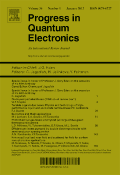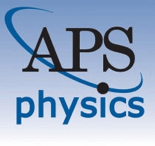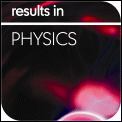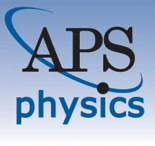
Quantum Science and Technology
Scope & Guideline
Pioneering the Future of Quantum Innovation
Introduction
Aims and Scopes
- Quantum Information Science:
Research centered on the principles and applications of quantum information, including quantum computing, quantum cryptography, and quantum communication. This encompasses both theoretical frameworks and experimental implementations. - Quantum Metrology and Sensing:
Studies aimed at enhancing measurement precision using quantum mechanical principles. This includes the development of quantum sensors and techniques for improving measurement accuracy in various applications. - Quantum Materials and Devices:
Exploration of new materials and technological advancements that exploit quantum mechanics for practical applications, such as quantum dots, superconductors, and novel photonic devices. - Quantum Algorithms and Computational Techniques:
Development and analysis of quantum algorithms for solving complex problems, including optimization, simulation, and machine learning, often leveraging the unique properties of quantum systems. - Quantum Dynamics and Control:
Investigating the dynamics of quantum systems and the control mechanisms that can be employed to manipulate these systems effectively for various applications.
Trending and Emerging
- Quantum Machine Learning:
The integration of quantum computing with machine learning techniques is increasingly popular, reflecting the potential for quantum algorithms to outperform classical counterparts in data processing and analysis. - Quantum Cryptography Advances:
Innovations in quantum key distribution and secure communication protocols are on the rise, showcasing the growing importance of security in quantum technologies and the development of practical applications. - Entanglement and Nonlocality Studies:
Research focusing on entanglement and its applications in quantum networking and communication is trending, indicating a shift towards exploring the implications of these phenomena for future technologies. - Quantum Error Correction and Fault Tolerance:
The development of techniques for error correction and fault-tolerant quantum computing is gaining momentum, driven by the need for reliable quantum systems in practical applications. - Hybrid Quantum-Classical Systems:
The exploration of systems that blend quantum and classical computing methods is emerging, reflecting a pragmatic approach to harnessing the strengths of both paradigms for complex problem-solving.
Declining or Waning
- Classical Quantum Comparisons:
Research comparing classical and quantum systems has become less frequent, possibly due to the maturation of quantum technologies, leading to more focused studies on quantum-specific applications rather than comparisons. - Basic Quantum Theory:
Papers solely dedicated to foundational aspects of quantum mechanics are less common, reflecting a trend towards applied research that addresses practical problems and advanced technologies. - Quantum Biology:
While still an interesting field, studies specifically exploring quantum effects in biological systems appear to have decreased, as researchers may be focusing more on direct technological applications of quantum science.
Similar Journals

Advanced Quantum Technologies
Transforming Theoretical Concepts into Practical SolutionsAdvanced Quantum Technologies is a leading journal published by WILEY, specializing in the rapidly evolving fields of quantum mechanics and technology. With an impact factor reflecting its rigorous peer-review process and high-quality research, this journal aims to disseminate the latest advancements across multiple disciplines, including Computational Theory and Mathematics, Condensed Matter Physics, and Electrical and Electronic Engineering. Since its inception in 2018, it has garnered a prominent reputation, as evidenced by its Q1 ranking in several categories for 2023 and its high percentiles in Scopus rankings, showcasing its significant contributions to the academic community. Researchers and professionals alike will find valuable insights within its pages, promoting innovations that bridge theoretical frameworks and practical applications. Although currently not an Open Access journal, Advanced Quantum Technologies continues to strive for excellence, ensuring that its content is accessible and impactful to those who are shaping the future of quantum technologies.

PROGRESS IN QUANTUM ELECTRONICS
Illuminating the Future of Electrical EngineeringPROGRESS IN QUANTUM ELECTRONICS, published by PERGAMON-ELSEVIER SCIENCE LTD, is a premier international journal that serves as a critical forum for the dissemination of high-quality research in the fields of atomic and molecular physics, electrical engineering, and materials science. With its esteemed Q1 category ranking in several disciplines, including Atomic and Molecular Physics, Electrical and Electronic Engineering, and Electronic, Optical and Magnetic Materials, this journal commands a high impact factor and is recognized for its rigorous peer-review process. Established in 1969 and evolving through various phases, the journal currently compiles cutting-edge research that drives advancements in quantum technologies. Researchers, professionals, and students alike are invited to explore a wealth of knowledge and stay updated on pioneering developments in quantum electronics, enhancing their understanding and contributing to the progression of this dynamic field.

PHYSICAL REVIEW A
Shaping the Future of Atomic and Molecular StudiesPHYSICAL REVIEW A, published by the American Physical Society, is a leading journal in the field of Atomic and Molecular Physics and Optics, boasting a Q1 category ranking in its area for 2023. With an ISSN of 2469-9926 and an E-ISSN of 2469-9934, this journal plays a pivotal role in disseminating high-quality research findings, theories, and methodologies that shape current understanding and advancements in the discipline. Although not an open-access journal, it remains highly accessible to professionals and academia through institutional subscriptions. The journal's impactful contributions are evident from its Scopus rank of #70 out of 224 in the field, placing it in the 68th percentile for scholarly impact. As a hub of innovative research and a vital resource for both students and seasoned researchers alike, PHYSICAL REVIEW A remains essential for those seeking to stay abreast of breakthroughs in atomic and molecular studies, as well as optics and photonics.

EUROPEAN PHYSICAL JOURNAL B
Driving Progress in Vital Areas of PhysicsEUROPEAN PHYSICAL JOURNAL B (ISSN: 1434-6028, E-ISSN: 1434-6036), published by Springer, is a prominent international journal based in Germany that focuses on the fields of Condensed Matter Physics and Electronic, Optical and Magnetic Materials. With a converged publication timeline from 1998 to 2024, it caters to a diverse audience that includes researchers, professionals, and students striving for the latest advancements in these vital areas of physics. The journal is recognized with a Q3 ranking in both relevant categories for 2023, showcasing its solid yet notable standing within the academic community. Although currently without an H-index, its Scopus rankings reflect a percentile performance of 41st and 39th, respectively, indicating a growing influence among its peers. The journal offers open access options, ensuring that groundbreaking research is widely accessible and contributes to the collective knowledge within the scientific domain. By aiming to publish high-quality, well-researched articles, the EUROPEAN PHYSICAL JOURNAL B plays a crucial role in disseminating innovative findings and fostering collaboration in the field of physics.

Quantum
Advancing the frontiers of quantum science.Quantum, an esteemed Open Access journal published by the Verein Förderung Open Access Publizierens Quantenwissenschaft, serves as a pivotal platform for the dissemination of groundbreaking research in the fields of atomic and molecular physics, and optics. Since its inception in 2017, Quantum has emerged as a leader in the academic community, boasting an impressive impact factor within the top quartile (Q1) in its categories, ranking #6 out of 81 in Physics and Astronomy (miscellaneous) and #35 out of 224 in Atomic and Molecular Physics, and Optics in 2023. With its global reach, based in Vienna, Austria, Quantum is dedicated to promoting innovative research and fostering collaboration among scientists, researchers, and students alike. The journal encourages unrestricted access to high-quality publications, ensuring that vital advancements in quantum science are available to all, thereby facilitating knowledge exchange and accelerating scientific progress. Explore the cutting-edge developments at the forefront of quantum studies and contribute to a vibrant scholarly community.

Results in Physics
Fostering Collaboration, Inspiring BreakthroughsResults in Physics, an esteemed open-access journal published by ELSEVIER, has been a prominent platform for disseminating cutting-edge research in the field of physics since its establishment in 2011. With its ISSN 2211-3797 and E-ISSN 2211-3797, this journal proudly holds a Q2 ranking in the Physics and Astronomy category for 2023, showcasing its significance and quality within the scientific community. With a remarkable Scopus rank of #28 out of 243 in the general physics and astronomy domain, placing it within the 88th percentile, Results in Physics serves as a vital resource for researchers, professionals, and students alike, fostering a collaborative environment for the advancement of knowledge across various subfields. The journal aims to provide a rapid and unrestricted access to innovative findings, encouraging open scientific dialogue and enhancing the visibility of breakthrough research. Located in the Netherlands at RADARWEG 29, 1043 NX AMSTERDAM, Results in Physics continues to uphold its commitment to excellence and accessibility in the ever-evolving landscape of physics research.

Physical Review Applied
Elevating Applied Physics to New HeightsPhysical Review Applied is a prestigious journal published by the American Physical Society that serves as a vital platform for researchers in the field of applied physics. With an esteemed Q1 ranking in the Physics and Astronomy category and a commendable Scopus rank of #35 out of 243, this journal represents a significant milestone in disseminating cutting-edge research. Established in 2014, it focuses on the latest advancements and applications in various realms of physics, promoting interdisciplinary collaboration and innovation. Although not an open-access journal, Physical Review Applied offers a range of access options for readers and institutions, ensuring that high-impact research remains widely available. Researchers, professionals, and students alike will find this journal an essential resource for staying at the forefront of applied physics developments.

PRX Quantum
Bridging disciplines through quantum exploration.PRX Quantum is a premier open-access journal published by the American Physical Society, dedicated to advancing the field of quantum studies. Launched in 2020, this journal serves as a vital platform for the dissemination of high-quality research across a diverse range of interconnected disciplines, including applied mathematics, computer science, and electronic engineering, as evidenced by its impressive rankings in the 2023 Scopus categories. With a remarkable impact factor and holding a top quartile position in multiple areas, PRX Quantum is not only pivotal for researchers engaged in quantum physics and related areas but also for professionals and students seeking to stay at the forefront of quantum technology and material science. Additionally, as an open-access journal, it champions the free distribution of knowledge, allowing for wider accessibility and engagement within the global research community. With a commitment to nurturing innovation and interdisciplinary collaboration, PRX Quantum is an indispensable resource for anyone interested in the evolving landscape of quantum science.

Condensed Matter
Illuminating the Path of Condensed Matter StudiesCondensed Matter is a leading open-access journal dedicated to the diverse and dynamic field of condensed matter physics, published by MDPI since 2016. With its base in Switzerland, the journal aims to present a platform for researchers and professionals to share innovative findings and advancements in areas such as electronic, optical, and magnetic materials. As of 2023, it is ranked in the Q3 category for both condensed matter physics and electronic, optical, and magnetic materials, a testament to its relevance and growth within the scientific community. Researchers will find valuable insights through its accessible format, fostering collaboration and knowledge dissemination within this interdisciplinary field. With a commitment to enhancing the global dialogue in condensed matter studies, Condensed Matter invites contributions that explore theoretical and experimental approaches, thus pushing the boundaries of understanding in this crucial area of science.

Physical Review X
Pioneering Insights for Tomorrow's InnovatorsPhysical Review X is a premier open-access journal published by the American Physical Society, dedicated to advancing the frontiers of knowledge in the field of physics and astronomy. Established in 2011, it has quickly gained recognition for its rigorous peer-review process and high-quality research contributions, achieving an impressive impact factor that solidifies its position in the top quartile (Q1) of its category for 2023. With a Scopus rank of #8 out of 243 in the general physics and astronomy division, it stands in the 96th percentile, showcasing its vital role in disseminating groundbreaking discoveries and theoretical insights across diverse physics domains. As an open-access journal, Physical Review X ensures that research is freely accessible to a global audience, fostering collaboration and innovation. Researchers, professionals, and students alike are invited to explore its extensive archive and contribute to the ongoing dialogue in the scientific community, empowering the next generation of physicists and astronomers.